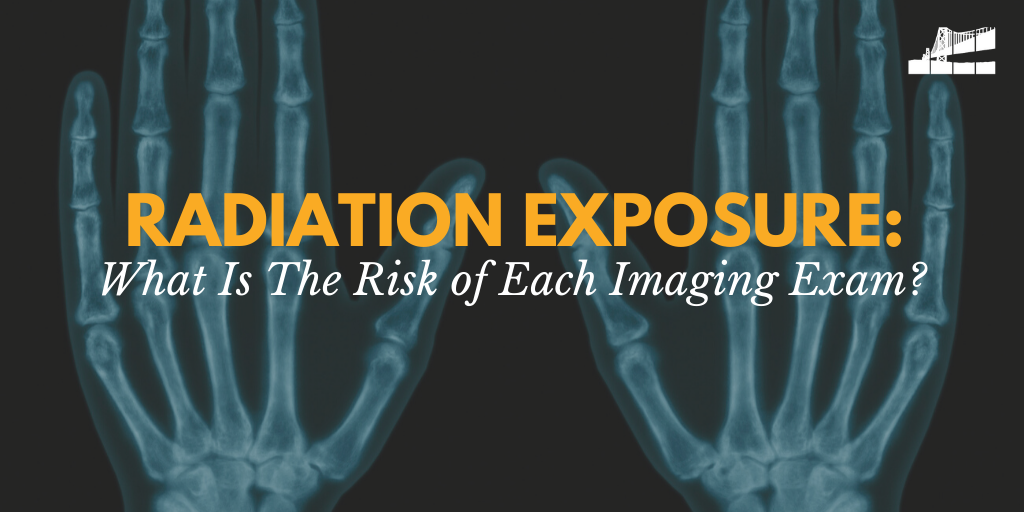Imaging scans such as CT, PET, and MRI are extremely common in the field of diagnostic radiology, but despite their popularity, many patients remain extremely wary of undergoing an imaging exam due to concerns over radiation exposure.
While it’s true that some imaging devices exert radiation as they scan, patients should not be worried; the radiation dose is so low compared to the radiation we receive from the environment naturally.
In order to truly understand the potential impact of imaging device radiation exposure, we’d like to look at how much radiation each of our imaging devices exerts.
How Much Radiation In A CT Scan?
The amount of radiation exerted by a CT scan varies greatly depending on the area being scanned. For example, a chest scan is comparable to the radiation exposure emitted by radon gas annually in a home. In general, CT scans emit a moderate amount of radiation (just above the amount given off by regular X-rays) in order to capture more detailed pictures.
Radiation Exposure In Nuclear Imaging?
Nuclear Imaging scan is the name given to imaging devices that use a contrast agent, or “radiotracers” which are radioactive materials, to image parts of the body. These kinds of scans include PET and Fluoroscopy exams. The radiation dose is comparable to the mild amount exerted by a regular X-ray.
Does MRI Use Radiation?
Contrary to belief, MRI scans do not use any radiation on imaging patients, so there is no radiation risk with this imaging exam.
How Much Radiation Is In An Ultrasound?
An ultrasound is another imaging device that does not use any radiation. This is why the exam is the go-to imaging exam performed on expecting mothers. Given that radiation can harm a fetus, ultrasound offers a no-risk, radiation-free imaging option to monitor baby growth.
How Much Radiation Is In A Mammogram?
Patients don’t always realize that mammograms actually exert radiation. However, the radiation dose is so minimal that it averages to about the radiation amount naturally produced by our bodies annually.
Radiation In An X-Ray
X-rays are probably the most common imaging exam and that’s probably because they’ve been around for the longest time! Did you know that X-rays produce a very mild amount of radiation during the scan? The radiation dose is comparable to a cross-country plane trip.
When deciding on whether to undergo an imaging exam that exerts radiation, it’s important to remember that these exams are only prescribed when absolutely necessary and that the benefits of the exam far outweigh the risks. Once you book an appointment, be sure to speak to your physician about the radiation exposure levels, as well as about the benefits and the risks of the procedure.

